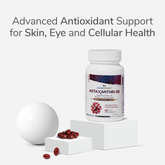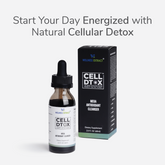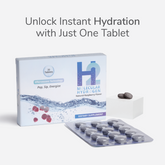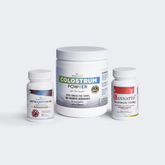Estimated Reading Time: 7 minutes
|Freckles (ephelides) are small brownish spots caused by melanin in the skin. They often become darker or more numerous with sun exposure. While freckles are harmless, many people want to lighten or reduce them for cosmetic reasons.
This guide explains evidence-backed methods to fade or remove freckles, including sun protection, topical treatments, and professional procedures.
We’ll discuss what’s proven to help, realistic expectations, and safety considerations.
How to Manage Freckles
Freckles are small, flat spots caused by increased melanin (pigment) production in the skin. They’re often genetic, but UV exposure is the main environmental trigger. When your skin is exposed to sunlight especially UVB rays it produces more melanin as a protective response. This process can darken existing freckles and lead to the formation of new ones.
-
Daily Sun Protection
The most effective way to manage freckles is to prevent UV-induced melanin activation. Consistent sun care can help keep freckles from worsening and may reduce the formation of new ones over time.
-
Apply broad-spectrum sunscreen (SPF 30+ daily). Look for physical blockers like zinc oxide or titanium dioxide for added protection.
-
Reapply sunscreen every 2 hours, especially after swimming or sweating.
-
Wear sun-protective clothing, wide-brimmed hats, and UV-blocking sunglasses.
-
Seek shade during peak sun hours (10 a.m. to 4 p.m.).
-
Avoid tanning beds, which emit concentrated UV radiation that stimulates pigmentation.
Sun protection is the most important and proactive step in freckle management. Without it, other treatments may be less effective or short-lived.
-
Topical Creams and Serums
Several topical products can gradually lighten freckles by inhibiting melanin or increasing skin turnover. These treatments require patience (often 8–12 weeks or more) and diligent application. They should be used along with sun protection.
i) Hydroquinone (2–4%)
- A prescription-strength bleaching agent that blocks tyrosinase, the enzyme needed for melanin production. It is one of the most common treatments for uneven pigmentation (freckles, melasma, age spots).
- In studies, hydroquinone has been shown to fade various brown spots by reducing melanin. However, long-term use can irritate skin (redness, itchiness) and, in rare cases, cause a bluish discoloration called exogenous ochronosis.
- Hydroquinone is generally recommended under a doctor’s care and used only for limited periods (often up to 3–6 months). Always follow guidance on frequency (typically once or twice daily) and avoid overuse .
ii) Retinoids (Vitamin A creams)
- Prescription retinoids like tretinoin (Retin-A) speed up skin cell turnover and help fade pigment. In clinical trials, tretinoin cream (0.1%) applied nightly produced gradual lightening of freckles and sun spots. Most patients saw “some reduction in coloration” of freckles with extended tretinoin use.
- Over-the-counter retinol (a weaker form of Vitamin A) can also improve tone over time, though more slowly. Retinoids often cause dryness, redness, or peeling, so start with every other night and use moisturizer. They make skin more sensitive to the sun, so strict SPF is required.
- Pregnant or nursing women should not use tretinoin creams (even though topical tretinoin hasn’t shown birth defects, it’s advised to avoid it during pregnancy).
3. Azelaic Acid (10–20%)
-
A naturally derived dicarboxylic acid that inhibits melanin formation. In studies on darker skin, azelaic acid 20% cream significantly reduced facial hyperpigmentation compared to a placebo. It tends to cause milder irritation (some burning or stinging) than hydroquinone.
-
Azelaic acid is prescription-strength for melasma and acne, but 10–20% formulas can also lighten freckles with consistent use over months.
4. Vitamin C (L-ascorbic acid):
-
A potent antioxidant that interferes with the pigment enzyme tyrosinase. Topical vitamin C serums (especially around 10–20% stabilized formulas) can help fade brown spots over time.
-
Studies show vitamin C not only protects skin from UV damage but also binds copper in tyrosinase to inhibit melanin synthesis. For best results, use a stable vitamin C serum under sunscreen each morning. Vitamin C is often combined with soy or licorice extracts in depigmenting products. It usually causes little irritation for most skin types.
5. Niacinamide (Vitamin B3)
-
Niacinamide (Vitamin B3) and kojic acid are also known to reduce melanin. Some over-the-counter creams contain niacinamide 4–5% or kojic acid (from mushroom), which may gradually lighten uneven pigment. These tend to be gentler but require consistent use.
-
While “natural” home remedies (lemon juice, aloe vera, papaya enzymes, etc.) are popular online, they lack strong scientific evidence and can irritate. Focusing on proven activities like those above is safer and more effective.
-
Each of these topicals may help fade freckles over time if used faithfully. They work slowly (often 2–3 months to see visible improvement) and require daily use. Always patch-test a new cream and use sunscreen, since many of these ingredients can make skin sun-sensitive.
Clinic Treatments for Freckles: What to Know
If over-the-counter products haven’t worked, you might be thinking about in-office treatments. Here’s a simple breakdown of what they offer.
-
Laser and IPL (Intense Pulsed Light)
What is it?:
These treatments use focused light energy to target and break down pigment beneath the skin's surface.
Who can opt?:
Generally suitable for lighter skin tones. Multiple sessions are usually needed for best results.
Downside?:
Temporary redness, flaking, or sensitivity. Strict sun protection is essential after treatment to avoid rebound pigmentation.
-
Chemical Peels
What is it?
Chemical solutions like glycolic or salicylic acid exfoliate the top skin layers, helping fade freckles over time.
Who can opt?
Can work for many skin types, but deeper peels aren’t suitable for sensitive or darker skin tones. Always consult a professional first.
Downside?
Expect peeling and mild irritation. Several sessions may be needed. Not ideal for everyone.
-
Cryotherapy
What is it?
Liquid nitrogen is applied to freeze and destroy pigment in individual freckles.
Who can opt?
Best for treating isolated freckles on lighter skin. Often done in a single session.
Downside?
Risk of hypopigmentation (lighter patches) or minor scarring in some cases.
-
Microneedling and Energy-Based Devices
What is it?
Tiny needles or energy-based tools are used to create micro-injuries that enhance serum absorption and stimulate skin renewal.
Who can opt?
Emerging option for various skin tones and concerns. Often paired with pigment-correcting serums.
Downside?
Still newer in pigmentation treatment. Mild redness and downtime vary by device and depth used.
Is It Worth It?
If you’ve already tried creams and want more noticeable results, in-clinic treatments can help. Just know they take commitment—aftercare matters, and sunscreen is key to keeping results.
Always book with someone experienced, especially if you have sensitive or darker skin. A proper plan makes all the difference.
Just a quick note: This information is meant to help you make informed choices about your skincare journey. It is not a substitute for medical advice. Always consult a licensed skin health professional.
Everyday Options to Fade Freckles
If you're not using prescription products, there are still ingredients you can try at home. They take time, but with daily use and good sun protection, they may help fade freckles gradually.
-
Vitamin C: A go-to for brightening. Look for serums with 10–20%. Apply daily under sunscreen to help with spots and even out skin tone.
-
Licorice Extract: This plant-based ingredient contains glabridin, which may help slow melanin production. It’s often found in brightening formulas with vitamin C or soy.
-
Niacinamide: Also known as vitamin B3, it helps prevent new dark spots from forming and is gentle enough for most skin types.
Also Read: 8 Ways to Use Astaxanthin for Skin Health
Freckle Care Basics: Key Takeaways
-
Protect your skin first: Sunscreen matters more than anything else. Use it daily and stay out of strong sun. Without this step, nothing else really works.
-
Use what works and keep it simple: Some ingredients can help fade freckles over time, vitamin C, retinol, azelaic acid, or hydroquinone. Pick one or two. Use them regularly. Don’t overload your skin.
-
Ask about in-office treatments: If you want faster results, a dermatologist can do peels or laser sessions. These take time and need aftercare.
-
Don’t rush: Some products can irritate your skin or make things worse. Start slow. Pay attention to how your skin reacts.
-
Check in with a professional: If something doesn’t feel right, or you’re unsure, talk to a dermatologist. It can save time and trouble.
-
Be realistic: Freckles may fade, but they don’t always disappear. The goal is a softer, more even look—not flawless skin.
FDA Disclaimer: This information is provided for educational purposes and is not a substitute for professional medical advice. The products and procedures discussed here are not meant to diagnose, treat, cure, or prevent any disease.
References
-
Praetorius C, Sturm RA, Steingrimsson E. Sun-induced freckling: ephelides and solar lentigines. Pigment Cell & Melanoma Research. 2014;27(3):339-350. doi:https://doi.org/10.1111/pcmr.12232
-
Piccolo D, Fusco I, Crisman G, Zingoni T, Conforti C. Efficacy and Safety of Q-Switched 1064/532 nm Nd:YAG Lasers on Benign Hypermelanosis in Dark-Skinned Individuals—A Preliminary Study. Journal of Clinical Medicine. 2024;13(6):1615. doi:https://doi.org/10.3390/jcm13061615
-
Thawabteh AM, Jibreen A, Karaman D, Thawabteh A, Karaman R. Skin Pigmentation Types, Causes and Treatment—A Review. Molecules. 2023;28(12):4839. doi:https://doi.org/10.3390/molecules28124839
-
Goldfarb MT, Ellis CN, Voorhees JJ. Topical tretinoin: its use in daily practice to reverse photoageing. The British journal of dermatology. 1990;122 Suppl 35:87-91. doi:https://doi.org/10.1111/j.1365-2133.1990.tb16131.x
-
Lowe NJ, Rizk D, Grimes P, Billips M, Pincus S. Azelaic acid 20% cream in the treatment of facial hyperpigmentation in darker-skinned patients. Clinical Therapeutics. 1998;20(5):945-959. doi:https://doi.org/10.1016/s0149-2918(98)80076-3
-
Sanadi RM, Deshmukh RS. The effect of Vitamin C on melanin pigmentation – A systematic review. Journal of Oral and Maxillofacial Pathology : JOMFP. 2020;24(2):374-382. doi:https://doi.org/10.4103/jomfp.JOMFP_207_20






![How to Get Rid of Freckles [Proven Ways]](http://wellnessextract.com/cdn/shop/articles/freckles.webp?v=1762234141)


![Top 5 Best Vitamins for Men in Their 30s [Backed by Science!]](http://wellnessextract.com/cdn/shop/articles/Vitamin_for_men_8fe0fe21-19b1-4020-b895-dc104449637e_165x.webp?v=1765878148)




























